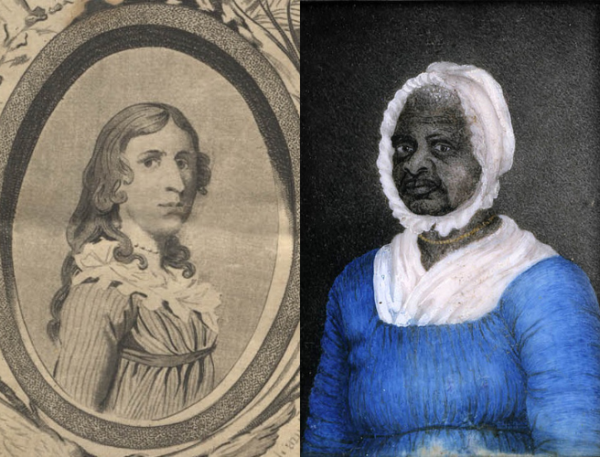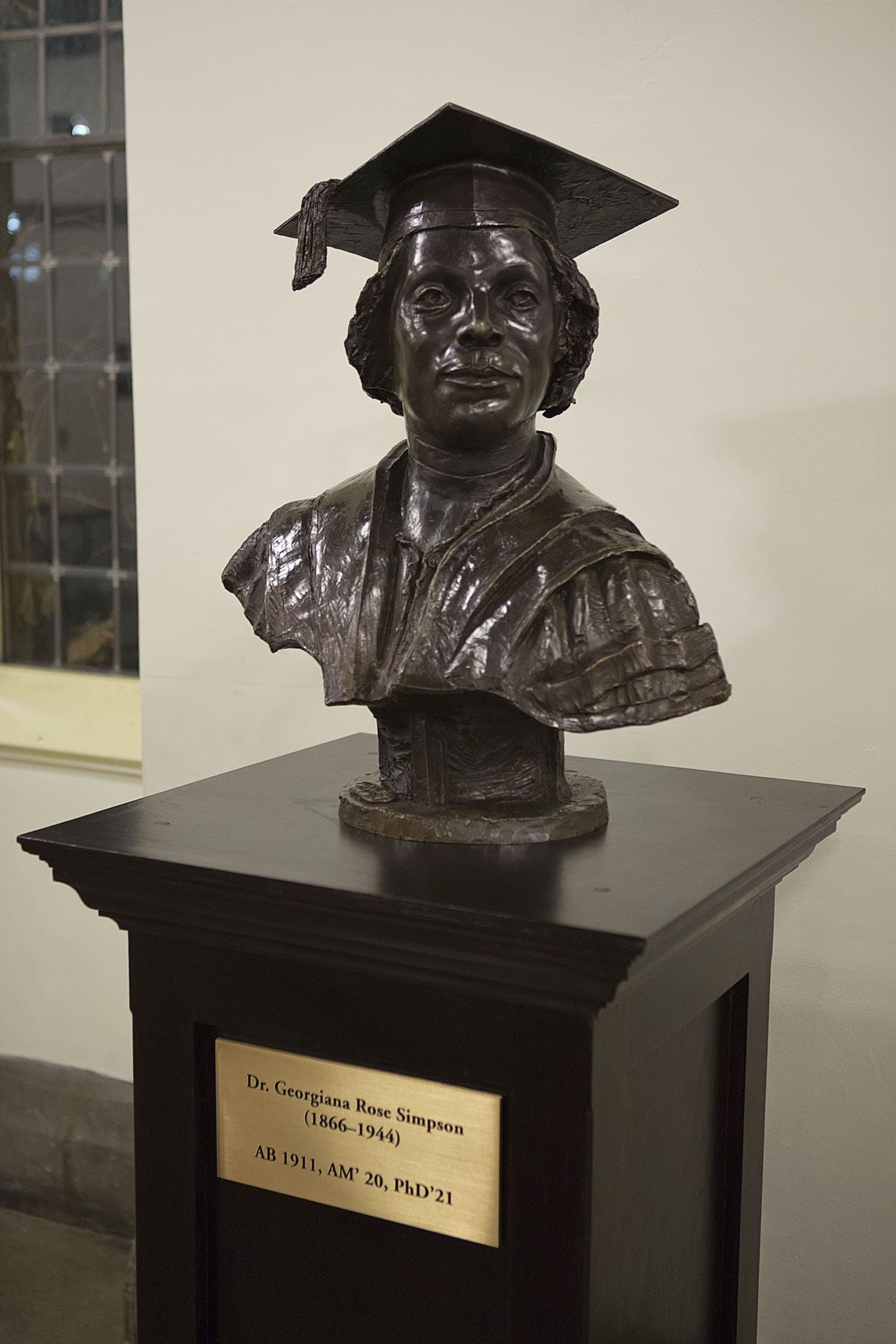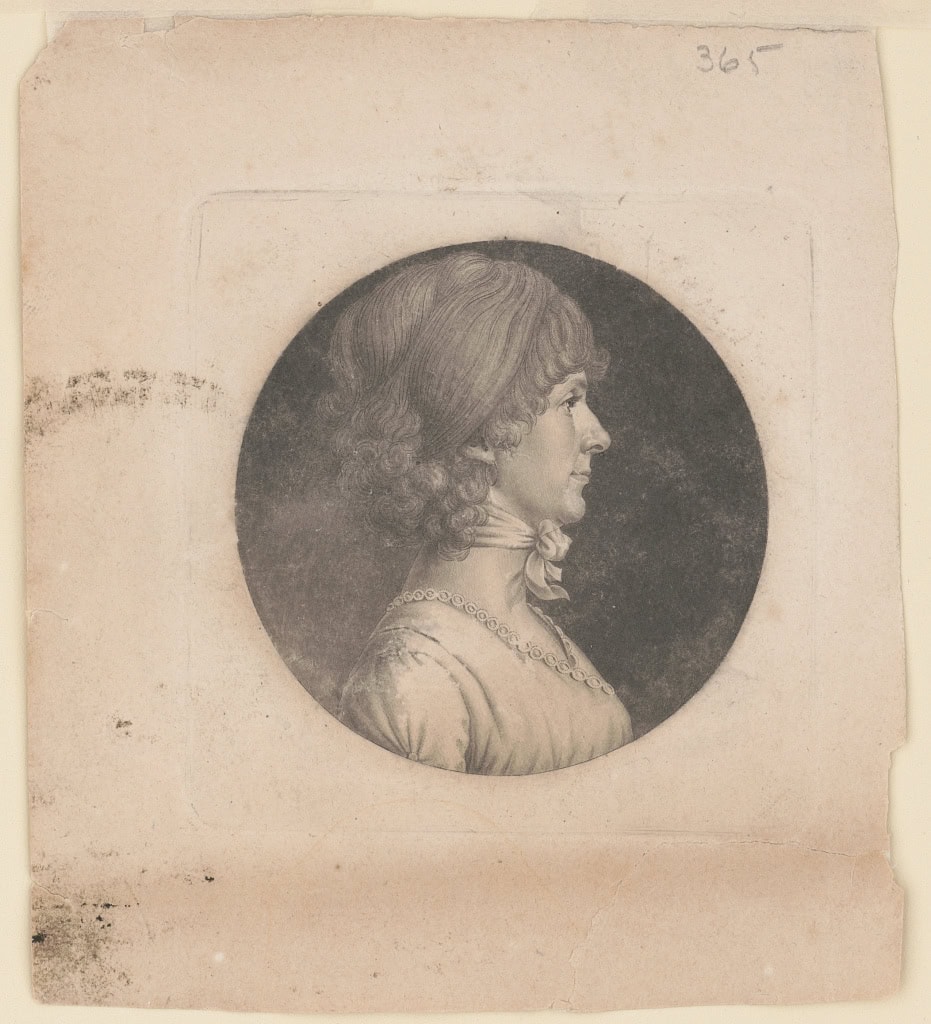One day, during a unit on the Revolutionary War, one of my fifth-grade students raised her hand. “Why are all the important people in history men?” she asked. Her question wasn’t confrontational. It was curious, maybe a little confused. I told her, “That’s a really good question, and you’re right to notice. There were important women in history, but their stories haven’t always been told, and we’re going to change that together.” This question stuck with me, and it surfaced something I already knew: our students notice who is missing.

Jessica Ramos’s students took on independent projects researching women such as Deborah Sampson (left) and Elizabeth Freeman (right). Wikimedia Commons/public domain
As a teacher and a doctoral student researching how early educational experiences shape women’s civic engagement, I often think about the stories we tell in our classrooms, and what happens when some stories are left out. It has been a long-standing issue in elementary social studies that women, particularly women of color, are underrepresented in the curriculum. Despite shifts in state standards and growing awareness of this problem, many lessons still center white men. The result is more than just an incomplete picture of the past. It sends a message about who has mattered in shaping our world. For young girls, especially those from historically marginalized communities, this absence can quietly suggest that their voices, too, are meant to stay on the margins.
In response to this problem, I began to teach counternarratives—stories that resist the dominant perspective and highlight the experiences of those who are often overlooked. These narratives don’t replace traditional content; they deepen it, challenging students to ask who has power, who is remembered, and why.
My classes often begin with reading historical fiction, giving students an accessible and emotionally resonant way to encounter complex historical contexts. Books like Bayou Magic by Jewell Parker Rhodes and Esperanza Rising by Pam Muñoz Ryan invite students to explore environmental justice, migration, labor, and resilience through the lives of strong girl protagonists. About Bayou Magic, one student wrote, “I didn’t know someone like her—young, poor, Black—could be the one to save a whole town.” Her response wasn’t just about understanding a plot point. It showed a student expanding her sense of leadership and who could embody it.
Counternarratives don’t replace traditional content; they deepen it, challenging students to ask who has power, who is remembered, and why.
From literature, we move into inquiry. Students explore primary sources—letters, diaries, petitions, oral histories, photographs—created by or about women across different time periods and communities. They consider: Why have we not heard about her before? How did her race, gender, or class shape her experience? What kinds of power did she have, even when formal political power was denied? This opens the door to a more inclusive and honest understanding of history, showing how women led, resisted, organized, and survived, even when their names were left out of the traditional record.
Students then take on independent projects that spotlight a woman whose contributions have been overlooked, using resources such as online databases, curated book lists, and picture books to guide their research. One student researched Elizabeth Freeman (Mumbet), whose 1781 court case challenged the legality of slavery in Massachusetts and set a precedent for abolition in the North. Another chose Deborah Sampson, a woman who disguised herself as a man to fight in the Continental Army. Sampson’s story challenged traditional ideas of gender roles and revealed how women found ways to circumvent being barred from formal participation in the military and the war.
These projects position my fifth-grade students as historians. They sift through fragmented accounts, piece together context, and present their findings to classmates. In doing so, they don’t just learn facts; they wrestle with the idea that history is constructed, and their work contributes to filling in the gaps.
Today, teaching inclusive history has become a political flashpoint. In my state of Colorado and across the country, educators are increasingly navigating censorship efforts, book bans, and pressure to avoid “controversial” topics, often shorthand for discussions of race, gender, and power. In some cases, social studies instruction is being sidelined entirely, making it even harder to carve out space for deeper engagement with these narratives.
These challenges make the work of inclusive teaching even more essential. When questioned by other teachers, administrators, and occasionally parents about why I include counternarratives about women in history, I emphasize that these histories don’t replace core content; they enrich it. They allow students to engage more critically and more fully with the events and forces that shaped our country. They build empathy and understanding. These are not political talking points; they are essential civic skills.
We also need to be clear-eyed about the stakes of erasure. The push to exclude women’s voices, LGBTQ+ stories, and the histories of people of color from classrooms is not a neutral curriculum choice—it is a form of historical dishonesty. When we avoid complexity in our teaching, we are not protecting students; we are limiting them. We are telling them that only certain stories are worthy of being told, and only certain people matter both in the past and today.
Grounding this work in inquiry has helped me to connect it clearly to district and state standards, and to frame it through the lens of academic skill-building. I document student learning outcomes and invite students’ families to see the kind of thoughtful engagement their children are demonstrating. I’ve also learned the value of transparency—sharing materials, learning goals, and student reflections with administrators and families who may be unfamiliar with this approach. Most importantly, I make space for discussion. When parents ask questions, I listen, and then I share what I’ve seen: students asking deeper questions, making personal connections, and finding power in learning that affirms their identities.
When we avoid complexity in our teaching, we are not protecting students; we are limiting them.
Developmental neuroscience and psychological research show that early adolescence is a pivotal period for identity development, during which girls’ confidence can begin to decline. This makes representation especially important in the upper elementary grades. When girls learn that women throughout history led social movements, wrote laws, fought injustices, and shaped the course of their communities, it reshapes their own sense of what’s possible in their own lives.
In my doctoral work, I study how early curricular experiences influence civic identity, particularly how girls see themselves as potential political participants. My classroom gives me a front-row seat to that process. I’ve seen students begin to ask: Could I be someone like her? What would I fight for? What would I change?
While large-scale curricular reform is necessary, change often begins in individual classrooms. Teachers make daily decisions about what to include, what to question, and what to center. By choosing to tell fuller, more inclusive stories of our nation’s past, we not only deepen students’ historical understanding—we help all our students see themselves as part of that story.
Teaching social studies is not just about learning dates and reading documents. It’s about identity. It’s about power. And it’s about possibility. In a time when some would rather erase the voices of women and communities of color from our classrooms, we must be even more intentional in our teaching. When we show girls that they’ve always been part of history, we equip them to believe that they can shape its future—even when others try to tell them otherwise.
Jessica Ramos teaches fifth-grade social studies in Denver, Colorado, and is pursuing a PhD at the University of Colorado, Denver, focused on women’s civic engagement and education.
This work is licensed under a Creative Commons Attribution-NonCommercial-NoDerivatives 4.0 International License. Attribution must provide author name, article title, Perspectives on History, date of publication, and a link to this page. This license applies only to the article, not to text or images used here by permission.


